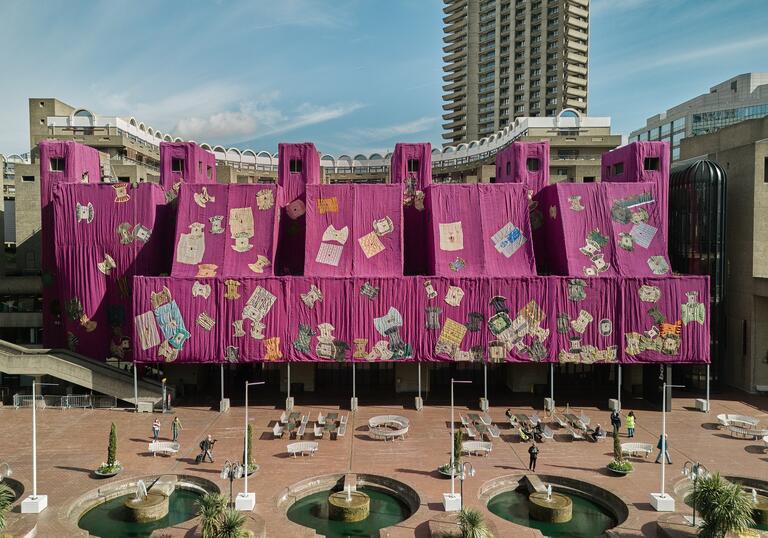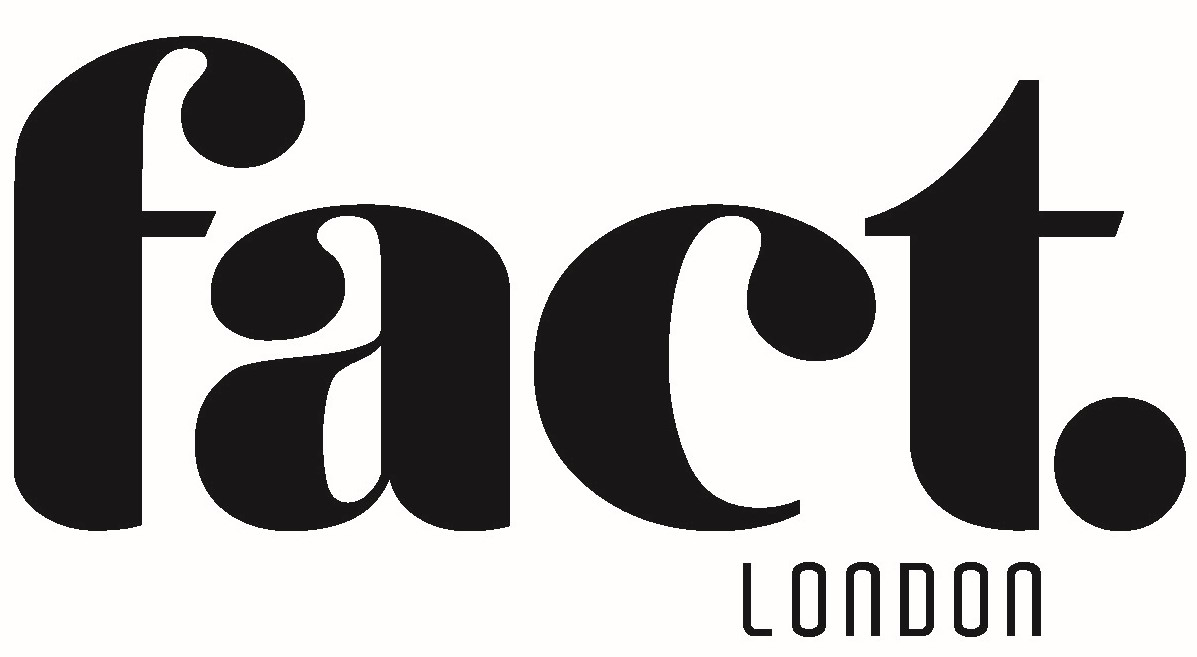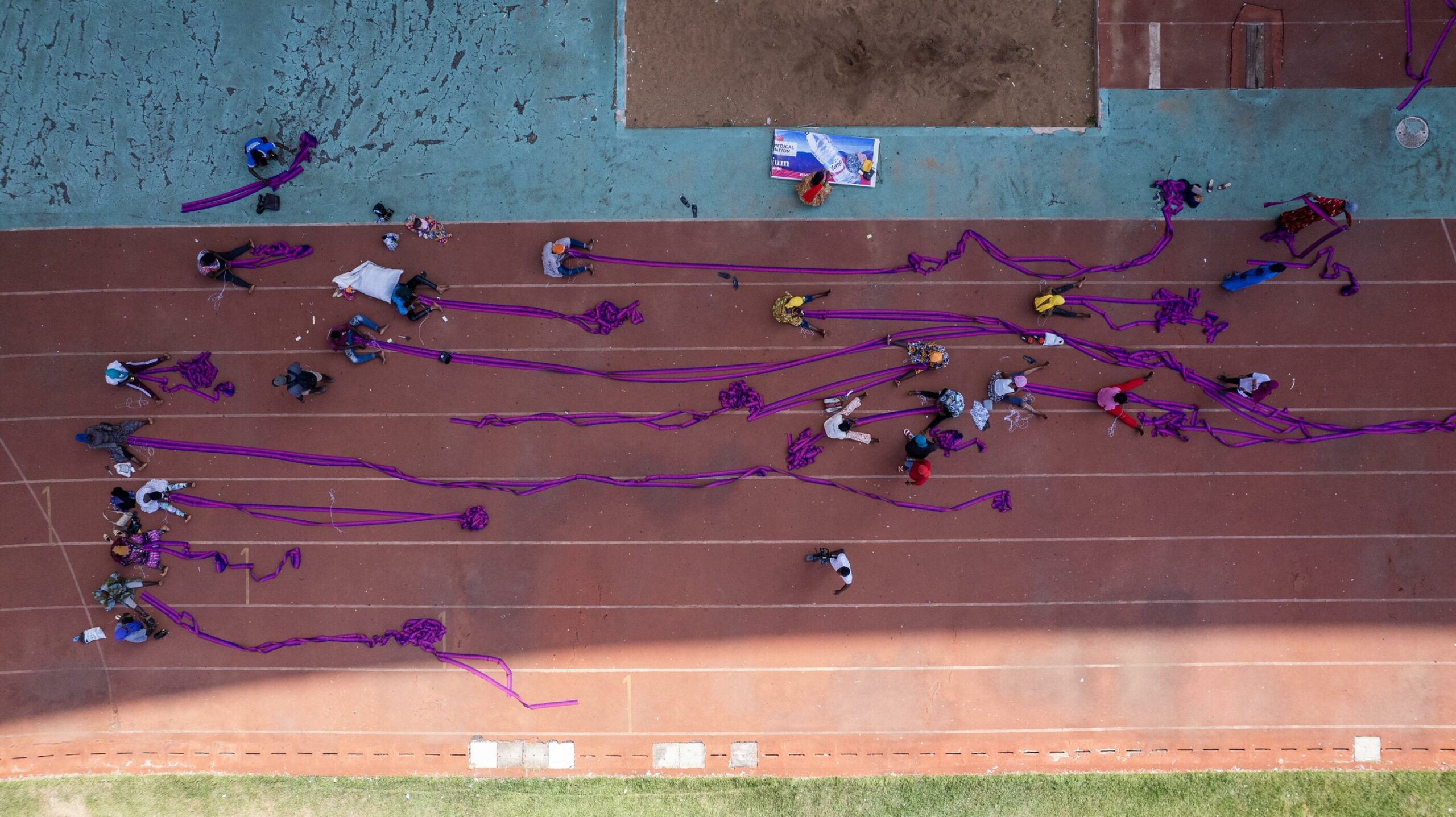The building goes from Brutalist to buoyant.
Barbican is a masterclass in Brutalism. Despite this, it has often been voted as one of Britain’s ugliest buildings. Whether you love it or hate it, it is transforming its Lakeside Terrace space with the help of the Ghanian artist, Ibrahim Mahama.
Purple Hibiscus opened in April, and runs until 18 August. The large-scale public commission is a site-specific work which spans 2,000 square metres. Named after Chimamanda Ngozi Adichie’s novel, it has been created with the help of craftspeople from Tamale, Ghana. Purple Hibiscus boasts pieces woven and sewn by hand and includes 100 batakaris, which are robes, worn by Ghanaians. Such items have often been saved by families over generations, and tell a special story.

Ibrahim explained: “It’s like doing plastic surgery, but this time you require a soul that dwells within the body, which is immaterial to build on the physical material. Collecting the individual smocks from communities can be quite challenging, but also opens up a portal of new formal aesthetics. Using the Alui Mahama sports stadium in Tamale as the primary studio space for the production allowed for us to organise the different layers of the work in ways we couldn’t have possibly imagined.”
Shanay Jhaveri, Head of Visual Arts at the Barbican, added: “At a time of increasing fracture and disharmony, Mahama, with this monumental site-specific artwork – the second in our newly launched commission series – will transform the Barbican’s iconic Lakeside into a site and space for the commemoration of community, intergenerational memory and solidarity, all achieved by the incredible capabilities and capacity of the human hand.”
It has been a busy year for Ibrahim Mahama, who was recently in AlUla, Saudi Arabia, to unveil a series of pieces for Desert X AlUla. Dung Bara – The Rider Does Not featured terracotta pots scattered throughout the desert landscape, suggesting the emergence of new ecosystems from historical relics. It references the pots used to store water in his native Ghana and how they are cracked and repaired over time, taking in elements of the landscape each time.
Check in with FACT for the latest things to do in London.
GO: Visit www.barbican.org.uk for more information.







